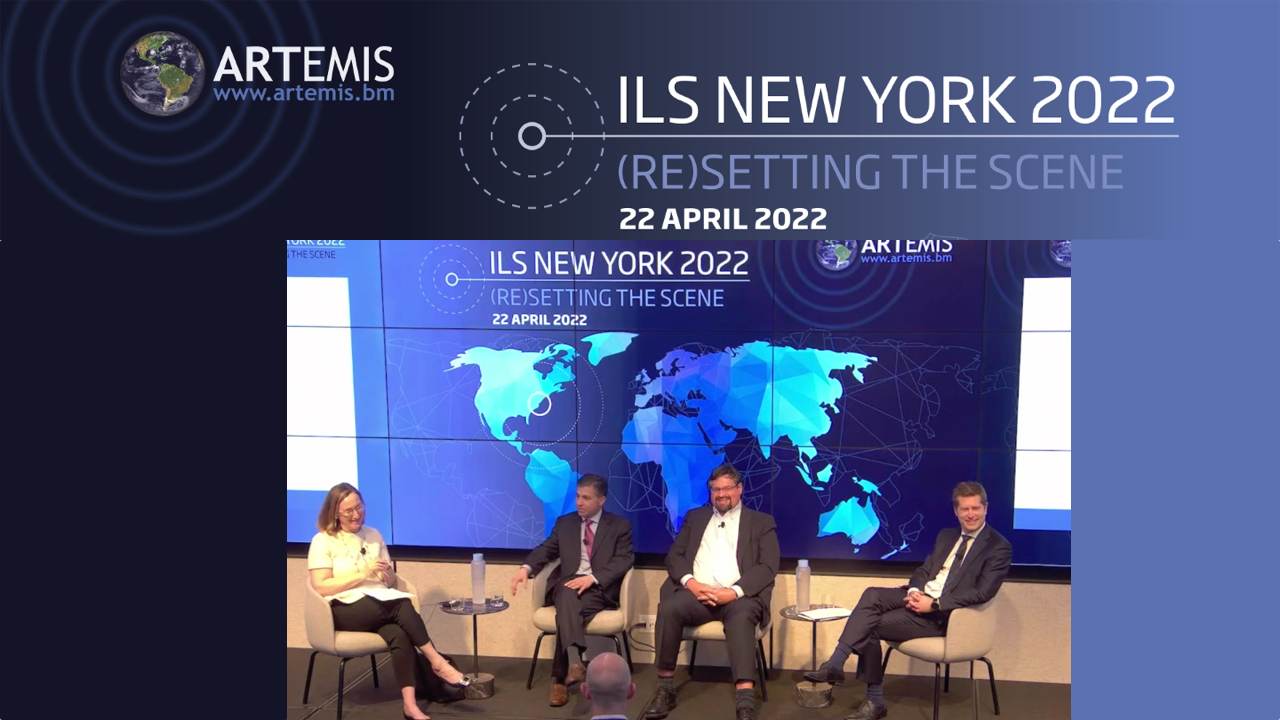Video from ILS NYC 2022 conference. Session 2: Accessible

At our ILS NYC 2022 conference in New York in April, the second session of the day saw speakers openly discuss the need to keep insurance-linked securities (ILS) product as accessible as possible, to both the cedent and investor sides of the marketplace.
This video is of the second session from our Artemis ILS NYC 2022 conference, held in New York City on April 22nd, 2022, the largest insurance-linked securities conference in the world since our last in Feb 2020, prior to the pandemic.
Over 200 attendees assembled in New York to hear industry expert speakers under the theme of “(Re)setting the scene”, discussing the future of the insurance-linked securities (ILS) market as the COVID-19 pandemic abates and the industry adjusted to another year of catastrophe losses.
This was the second session of the conference and featured an insightful conversation about how the ILS market can capitalise on its successes, while broadening access to its products and investment opportunities, with a particular focus across catastrophe bonds, as well as discussion of other reinsurance-linked arrangements and investments.
The session was moderated by Judith Klugman, Head ILS Sales, Swiss Re. Participants were: David Flitman, CEO, Safepoint Insurance; Chris Caponigro, Global Head, AXIS ILS; Philipp Kusche, Global Head ILS & Capital Solutions, TigerRisk Capital Markets & Advisory.
The full video is close to an hour long and there are some amazing learnings to be had by listening to the expert speakers, who shared insights into how they think about the market, its current state and what it will take to build this out further.
Klugman, of Swiss Re, asked the panellists for their views on how they aim to make access more seamless and efficient.
Caponigro of AXIS ILS replied, “So, what do I do next year? I have to keep doing what I’m doing, keep trying to find ways that are more transparent and scalable and economic for an investor, also for the sponsor.
“So, it’s more about how do we attract more capital into this industry? Because it’s only $100 billion, that’s nothing, we are such a niche market. It doesn’t get anyone’s attention because it’s not big enough. So how do you make it bigger? You have to be more transparent, you have to be much more efficient at what we’re doing to bundle risk.”
Flitman of Safepoint took on the thread, saying, “You’d think you would the same levels of efficiency in the cat bond market versus reinsurance.
“But I think that’s where the cat bond market and ILS market still is kind of lagging is, they don’t have that same rapport with the clients where they have the comfort to drop down bespoke, large lines pretty quickly.
“So, there’s a lot of structuring costs, a lot of inefficiency in the product. I mean, at the same time, there are some places where it can be really exciting.”
Klugman shared the benefit of her experience leading a team that has placed catastrophe bonds into the market for more than a decade.
“One of the things that I heard as a salesperson very early on in trying to market the asset class, is that the investors were a bit sceptical that there was an asymmetry of information, that the buyer knew a lot more about the risks that was passing through than they did,” she commented.
Continuing, “So, that was the challenge that we faced very early on, and that we’re still faced with and that, I think, Dave, is what creates the sort of enormity of the process and the documentation.
“It was never meant, the 144A, this particular segment of the market was never meant to cannibalize reinsurance, there is a place for both parties for that handshake, for that discussion, for those bespoke trades.”
Kusche, of TigerRisk, gave his views as to how the catastrophe bond market can encourage more new sponsors into it.
“Market timing is, I think, important. There are certainly times in the market where it’s a lot easier to introduce new sponsors and other times where it’s maybe more difficult. I think the approach we took was really to try to keep things very simple, and I think it goes back to that transparency and the surprises point,” Kusche explained.
Adding, “Start with a named peril only cover in one state or very, very confined covered area, try to be as transparent as you can, and also take expected loss bands which are not too low in that sense, to create too much concern.
“But then, really, going back to the transparency, really be very clear on the reporting side. Maybe overshare some information which wasn’t historically done, on providing more frequent exposure reports and, then trying to clearly articulate the underwriting approach, the claims approach of these kinds of companies.”
The full video interview is embedded below and can also be viewed in full, along with previous Artemis Live video interviews, over on our YouTube channel.
You can also listen in audio to all of our interviews by subscribing to the Artemis Live podcast here.
All of our Artemis Live video interviews have a focus on reinsurance, ILS and the efficiency of risk transfer and can be accessed directly from our YouTube Channel.
You can also listen in audio to these interviews by subscribing to the Artemis Live podcast here.
Thank you to all of the kind sponsors of our ILS NYC 2022 conference for their support. For all enquiries regarding sponsorship opportunities at future Artemis events please contact us.

For all enquiries regarding sponsorship opportunities please contact [email protected]






